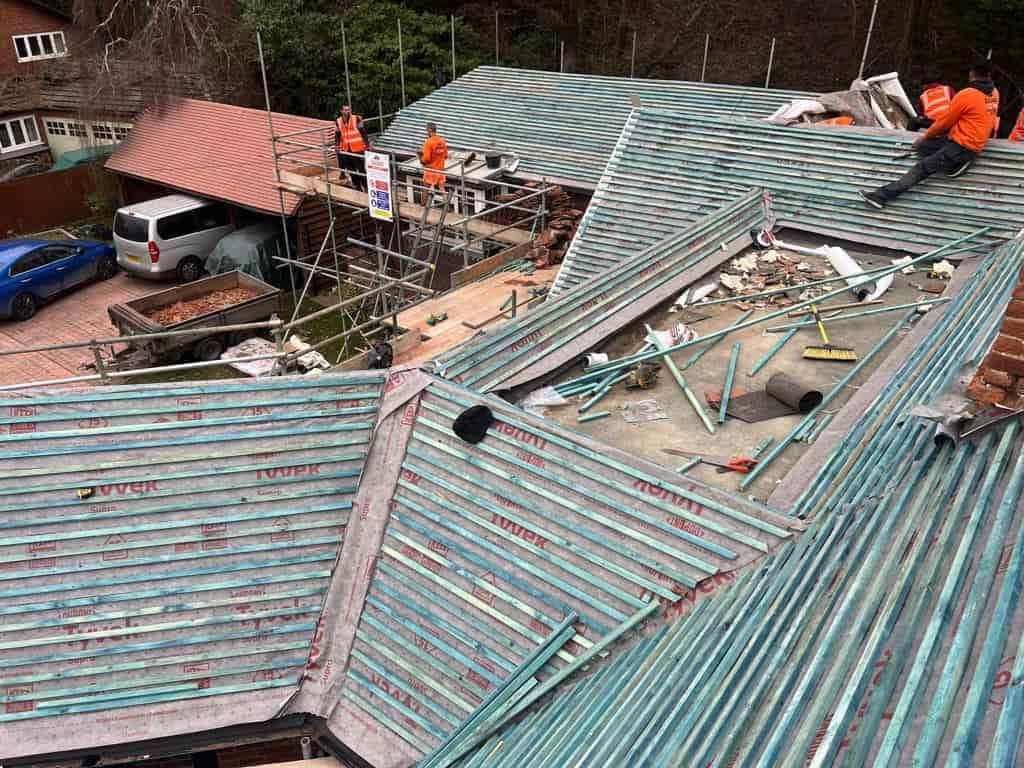How to Identify and Address Structural Issues Leading to Slipped Tiles
Introduction: A well-maintained roof is essential for the safety and longevity of your home. One of the common problems homeowners encounter is slipped tiles or shingles. While it’s tempting to fix the visible issue simply, it’s crucial to understand that slipped tiles are often a symptom of underlying structural problems. In this blog post, we’ll guide you on identifying and addressing these structural issues that can lead to slipped tiles, ensuring a durable and reliable roof for years to come.
Inspect the Roof from the Ground
Before climbing onto your roof, start with a visual inspection from the ground. Look for signs of slipped or missing tiles, such as uneven lines or noticeable gaps. Additionally, check for any sagging or uneven areas on the roof’s surface, which may indicate structural issues beneath the tiles.
Examine the Attic and Ceiling
A closer look inside your attic can reveal valuable insights into your roof’s condition. Check for the following signs:
- Water Stains: Dark spots or stains on the ceiling or attic walls can indicate water leaks caused by slipped tiles.
- Daylight Penetration: If daylight seeps through gaps in the attic, it’s a clear sign of a structural issue, as it means there are openings for water and pests to enter.
- Sagging Roof Deck: An uneven or sagging roof deck may suggest compromised structural integrity.
- Check for Mold and Rot
Moisture is the enemy of your roof’s structural integrity. Inspect the attic and the underside of the roof for any signs of mould, mildew, or wood rot. These issues often result from water infiltration caused by slipped tiles or roofing problems.
Inspect the Roof’s Support Structure
If you have concerns about the structural integrity of your roof, it’s essential to call in a professional roofing contractor to assess the situation. They will check the following components:
- Roof Deck: The underlying surface of the roof should be examined for any rot, sagging, or damage.
- Roof Trusses or Rafters: The key structural components supporting your roof. A thorough inspection will identify issues like bowing, cracks, or breaks.
- Fascia and Soffits: These elements can be damaged by water intrusion from slipped tiles, so ensure they are in good condition.
Addressing Structural Issues
Once you’ve identified structural issues leading to slipped tiles, addressing them promptly is crucial to prevent further damage. Here are some common solutions:
- Roof Deck Repair or Replacement: If your roof deck is damaged, it may need to be repaired or replaced. This provides a stable base for your roofing materials.
- Truss or Rafter Repairs: Damaged or weakened trusses or rafters should be repaired or reinforced to maintain the roof’s structural integrity.
- Fascia and Soffit Repairs: Fixing or replacing damaged fascia and soffits will prevent further water intrusion and protect your roof.
Conclusion: Slipped tiles on your roof can be a visible symptom of deeper structural issues that require immediate attention. Regular inspections and prompt action can help you identify and address these problems, ensuring the safety and durability of your roof. When in doubt, it’s always best to consult a professional roofing contractor, like KLJ Roofing in Towcester, who can provide expert guidance and solutions for your roofing needs. Don’t wait until a small issue becomes a significant problem—take proactive steps to protect your home and investment.
Call us on: 01327 223 898
Click here to find out more about KLJ Roofing Towcester
Click here to complete our contact form and see how we can help with your roofing needs.

